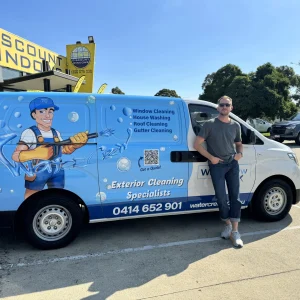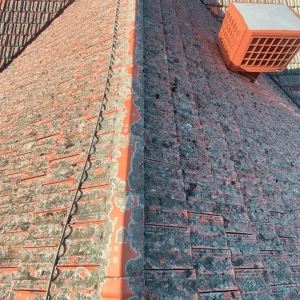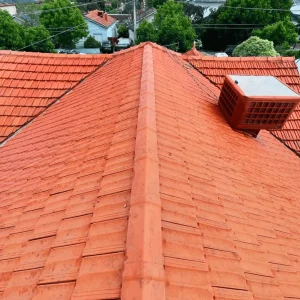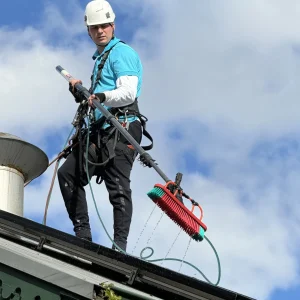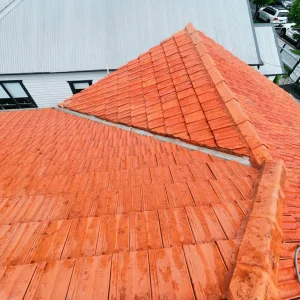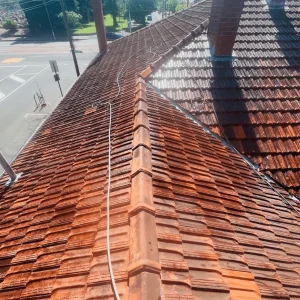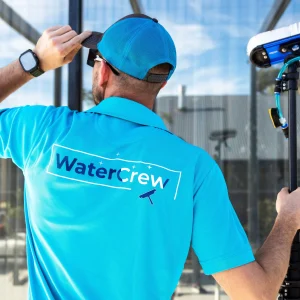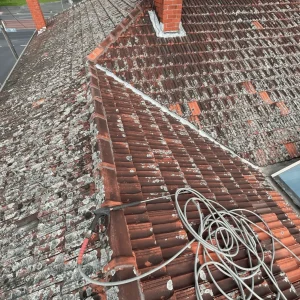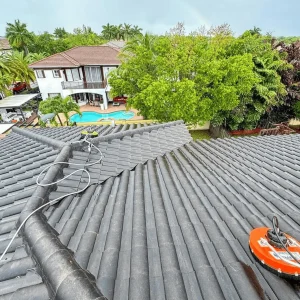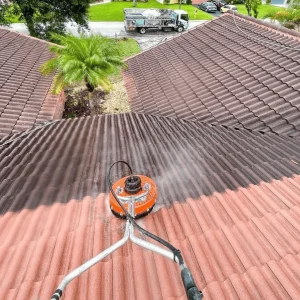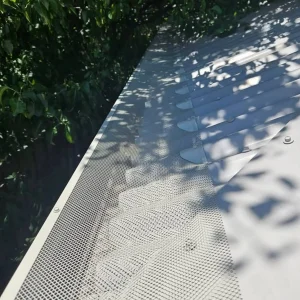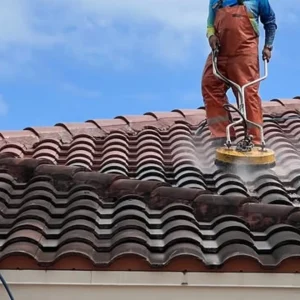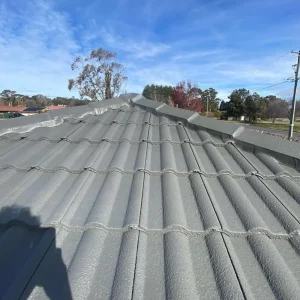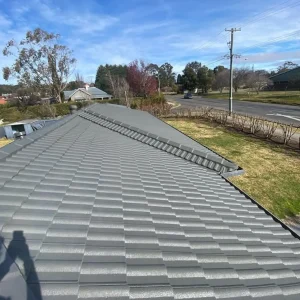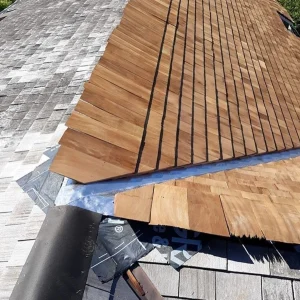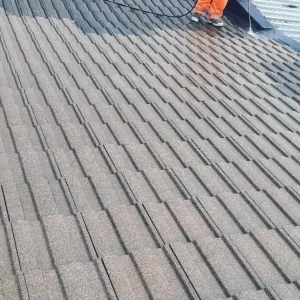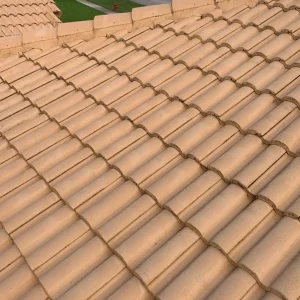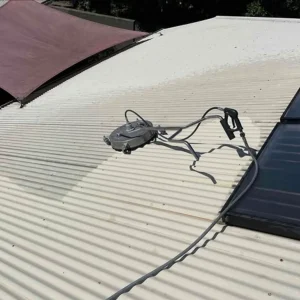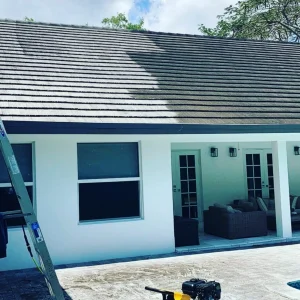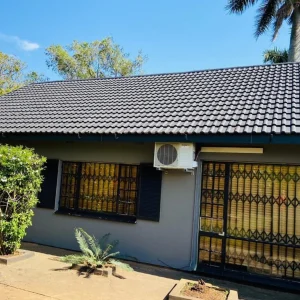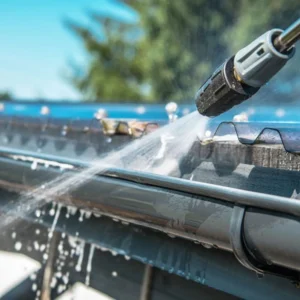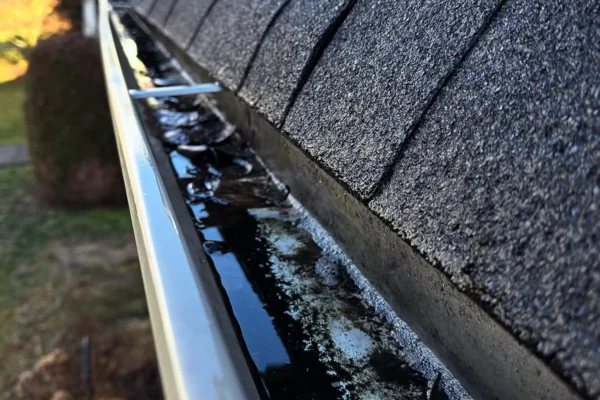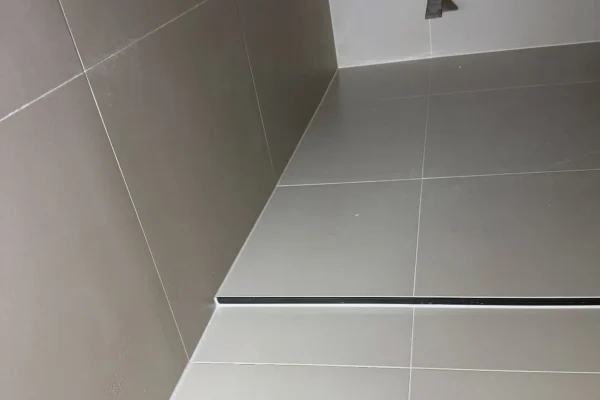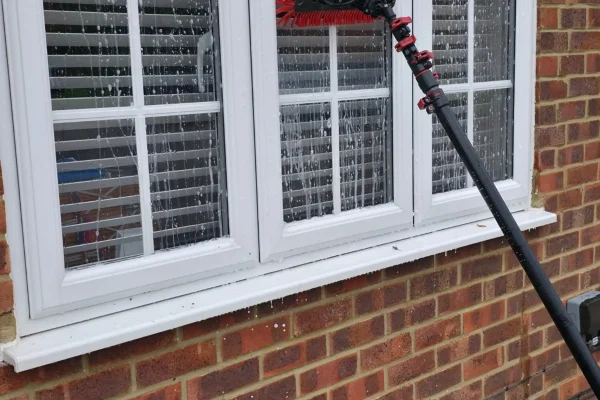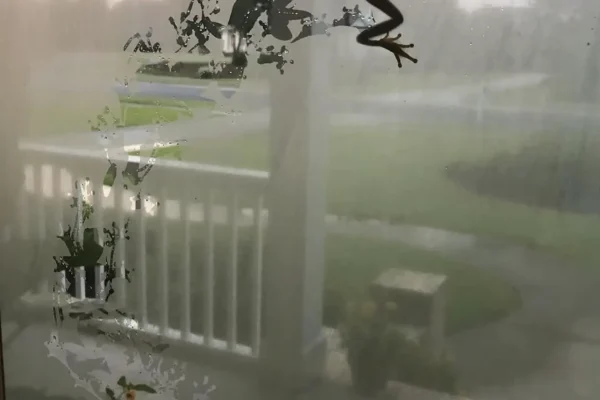If roof pressure cleaning has been sitting on your to-do list longer than leftover paint tins in the garage, you’re not alone. But here’s the rub: leaving your roof covered in mould, grime, or lichen can do more than kill your kerb appeal — it can shorten your roof’s lifespan and open the door to expensive damage. We’ve seen it happen time and again. One job in Brisbane, we lifted off what looked like moss only to discover cracked tiles hiding beneath. If they’d left it another wet season, they’d be swimming in ceiling leaks.
Roof pressure cleaning isn’t about blasting your tiles into oblivion. Done right, with the right cleaning solutions and surface cleaners, it can protect your home, restore your roof’s colour, and prevent issues that cost far more than a clean. And if you’re in a fire zone, you’ll want a tidy roof before the next inspection rolls around. Let’s break it down.
- This year was my second time using WaterCrew for an exterior clean and the cleaning of our windows inside and out. They arrived on time were very thorough and was again very happy with the result and friendly service.read moreread lessKate Cox11/21/2025
- Excellent job cleaning my colorbond roof on two story house with 20 years of city grime and moss. Very careful and professional.read moreread lessJohn Morgan10/28/2025
-
Benefits roof pressure cleaning
Here’s what I tell customers when they ask if roof cleaning is really worth it:
1. Prevent damage from organic buildup
Lichen, moss, and mould aren’t just ugly. They trap moisture and eat into coatings or tiles over time, especially on cement roofs and other delicate materials. Over time, this organic growth can lead to costly repairs.
2. Avoid blocked gutters and downpipes
A neglected roof leads to organic matter washing into gutters, causing overflows or water pooling — a big risk during heavy rainfall.
3. Improve thermal efficiency
A dirty, darkened roof surface absorbs more heat. Clearing off grime improves your roof conditions and can help your home stay cooler.
4. Boost street appeal
If you’re selling or just want your place to look after, a clean roof makes a huge difference across a wide range of roof types.
5. Spot early signs of damage
Cleaning your roof gives you a close look at cracked tiles, missing screws, signs of damage or lifted flashing — all things that can lead to water damage or even thousands of dollars in roofing repairs.
High-pressure or Soft wash
Not all roofs can handle the same cleaning methods. Choosing the wrong washing method can lead to severe damage, especially if you’re using high-pressure water on delicate roof tiles.
High-pressure cleaning
- Good for: Concrete tiles, terracotta (with care), metal roofs with strong acrylic paint
- Risks: Can crack brittle roof tile materials, strip protective coatings like durable acrylic paint, or force dirty water under flashings
- Ideal Tools: Power washer with medium pressure and controlled psi velocity
Soft washing
- Good for: Older tiled roofs, painted surfaces, fragile or heritage roofs
Method: Uses low water pressure and a safe chemical mixture (often sodium hypochlorite diluted properly) to break down moss growth and tough stains - Risks: Needs the right dwell time and thorough rinsing with pressure water to avoid residue buildup
Real job tip: This week we cleaned a 25-year-old tile roof in Burwood using soft washing only — high-pressure wash would’ve shattered half the tiles. Know your roof material and roof size before deciding.
Step-by-step guide
Initial Roof Inspection
Check roof cavity, roof shingles or cement tile roofing for rust flakes, cracked tiles, or advanced rust. Identify the type of roof and condition.
Gutter and Downpipe Prep
Clear out blockages and install guards if needed. Prevent water overflow and direct dirty water away from the water tank inlets.
Apply Treatment (if soft wash)
Coat the roof with cleaning solutions designed for roofing material, avoiding corrosive chemicals. A soft brush or a telescoping pole may help reach tough dirt.
High or Low Pressure Rinse
Use pressure washers or pressure cleaners with safety gear. Work from the ridge to gutters, never against tiles.
Final Rinse and Ground Clean-Up
Clean fascia, squeegee mop solar panels, rinse paths and garden beds. Protect delicate surfaces from runoff.
Post-Clean Check
Spot any new leaks, signs of water damage, lifted paint systems or rust bubbles. Important if prepping the roof for painting.
Safety matters
Roof pressure cleaning is not a Sunday arvo chore unless you have the right protection gear and know the potential hazards.
- Protection harnesses and roof anchor points are required on anything steeper than a basic pitch
- Safety gear: Non-slip boots, gloves, safety practices including eye protection
- Electrical awareness: Look for solar systems and overhead lines
- Weather watch: Wet roof surfaces mean more risk of slipping
- Use of correct equipment: Avoid high-pressure streams on delicate materials or complex roof structures
If your cleaner shows up with just a ladder and a hose, you might want to look for professional roof cleaners with extensive experience.
Common issues we see from DIY or dodgy jobs
Seen plenty of damage from pressure cleaning gone wrong. Here are the most common headaches:
- High-pressure cleaning on fragile roof types can lead to broken tiles or blown-off ridge caps
- Water ingress from blasting under sheets or cracked areas
- Slippery wet surfaces from not managing dirty water correctly
- Damage to solar panels from overspray or clumsy walking
- Stubborn dirt is returning quickly because of a patchy or incomplete cleaning process
- Plant damage from harmful chemicals and dirty runoff
If you’re not sure what pressure to use, stick to the lowest pressure that still delivers an effective cleaning result. Use cleaning techniques suited to your roof type.
Check before you clean
Whether you’re doing it yourself or hiring roof cleaning specialists, start with a roof inspection:
- Assess roof surface for touch-up paint needs or curing process issues
- Check roof conditions for any signs of black stains, algae stains or stubborn dirt
- Confirm that your roof cleaning cost includes safety practices and protection gear
- If your roof is fragile or painted, avoid high-pressure roof cleaning and go for soft wash
There’s a wide range of roof cleaning services out there, but not all offer quality detailed work. Look for a professional roofing company that uses advanced equipment, understands pressure cleaning process variations, and has industry experience with all types of roof tiles, concrete tiles, and commercial properties.
Want to get a proper clean roof without damaging your investment? Send us a photo of your roof type and we’ll steer you clear of pressure washing mistakes and toward the safest, longest-lasting cleaning solutions.
Proudly supported by our window cleaning company in Melbourne — your go-to team for crystal-clear results across roofs, glass, and exterior surfaces in Melbourne.

Your satisfaction is our top priority. We tailor our services to meet your specific needs

We are committed to environmental responsibility. Our cleaning products are eco-friendly.

Pricing
We offer competitive pricing without compromising on the quality of our services.

Expertise
As a locally owned and operated company, we understand the unique needs of our community.
FAQ
Can pressure washing void my roof warranty?
Yes. If you don’t follow the recommended pressure cleaning process or use safe chemical mixture guidelines, you risk voiding warranties from tile manufacturers or coated steel substrate producers like BlueScope Steel.
How often should I clean my roof?
For regular roof cleaning, every 3–5 years is best. Consider annual pressure cleaning in areas with high rainfall or lots of foliage.
Will roof cleaning remove mould permanently?
It removes visible organic growth, but to prevent regrowth you’ll need a biocide or advanced chemical treatment. Otherwise, stubborn stains come back.
Is roof pressure cleaning water-wasteful?
Not when done properly. Pressure washing equipment with advanced cleaning techniques reduces waste. Soft wash uses less pressure water and less runoff.
Can I clean the roof myself?
You can, but unless you have safety steps in place, advanced equipment, and knowledge of types of roofs and acceptable roofing solutions, you’re risking unnecessary wear and injury.

